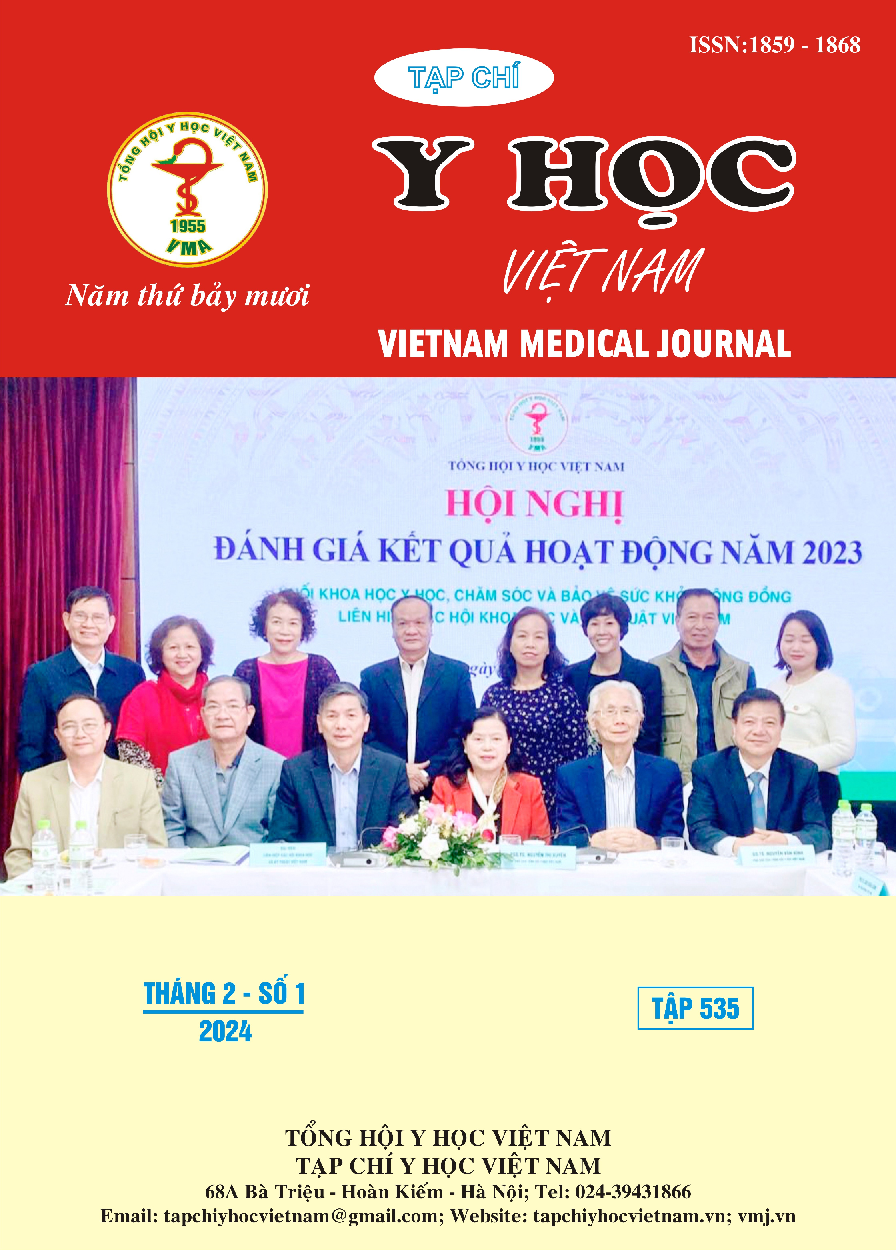ĐÁNH GIÁ HIỆU QUẢ ĐÀO TẠO CẤP CỨU, ĐIỀU TRỊ BỆNH NHÂN ĐỘT QUỴ NHỒI MÁU NÃO CẤP
Nội dung chính của bài viết
Tóm tắt
Mục tiêu: Đánh giá hiệu quả đào tạo nhân lực cấp cứu, điều trị bệnh nhân đột quỵ nhồi máu não cấp (acute ischemic stroke-AIS) tại 6 Bệnh viện quân y khu vực Phía Bắc năm 2022. Đối tượng và phương pháp: thiết kế nghiên cứu tiến cứu, mô tả cắt ngang. Tiến hành đánh giá nguồn nhân lực, hiệu quả hoạt động của các nhóm cấp cứu AIS tại 6 Bệnh viện Quân y khu vực phía Bắc sau quá trình đào tạo về các phương diện bao gồm: số lượng, cơ cấu nhân sự, các kỹ thuật thực hiện được, kết quả thu dung cấp cứu bệnh nhân. Kết quả: Tuổi trung bình của NVYT trước đào tạo là 49,6 ± 5,8, cao hơn so với tuổi của các NVYT sau đào tạo (38,4 ± 7,6 tuổi) có ý nghĩa thống kê. Mặc dù độ tuổi ≥40 là chủ yếu, tuy nhiên có sự trẻ hoá NVYT sau đào tạo. Đa phần NVYT là nam giới, chiểm khoảng 80%. Thời gian công tác trong chuyên ngành của NVYT sau đào tạo đột quỵ cao hơn trước, tuy nhiên sự khác biệt chưa có ý nghĩa thống kê. Trước đào tạo, NVYT tham gia điều trị đột quỵ nhồi máu não chủ yếu là y bác sỹ chuyên ngành hồi sức tích cực (46,3%); tỷ lệ này xu hướng giảm (23,8%) sau khi các nhân viên được đào tạo sâu hơn về đột quỵ não. Tỷ lệ NVYT chuyên ngành nội thần kinh tăng từ 20 lên 30% sau đào tạo. Sau đào tạo, nhân viên y tế (NVYT) có trình độ chuyên môn bác sỹ 89 người chiếm tỷ lệ 55,6%, điều dưỡng 71 người chiếm tỷ lệ 44,6%. Trình độ của nguồn nhân lực tham gia các đơn vị đột quỵ có tới 61,3% từ đại học trở lên, đáp ứng nhu cầu xử lý, cấp cứu đột quỵ trong thời gian ngắn nhất, tỷ lệ này chưa có sự khác biệt so với trước đào tạo. Kết luận: Công tác đào tạo đã phát huy vai trò tích cực trong cải thiện hiệu quả cấp cứu, điều trị bệnh nhân AIS. Cần tiến hành rộng rãi và hiệu quả hơn trên phạm vi lớn nhằm nâng cao hiệu quả tổng thể của hoạt động cấp cứu AIS trên phạm vi cả nước. Tuy nhiên cần đầu tư nâng cao hơn nữa trình độ chuyên môn, các kỹ thuật chuyên sâu nhằm đáp ứng xu hướng mới trong chiến lược cấp cứu, điều trị AIS trong nước và thế giới.
Chi tiết bài viết
Tài liệu tham khảo
2. Powers W.J., Rabinstein A.A., Ackerson T., et al. (2019). Guidelines for the Early Management of Patients With Acute Ischemic Stroke: 2019 Update to the 2018 Guidelines for the Early Management of Acute Ischemic Stroke: A Guideline for Healthcare Professionals From the American Heart Association/American Stroke Association. 50 (12), e344-e418.
3. Alberts M.J., Chaturvedi S., Graham G., et al. (1998). Acute stroke teams: results of a national survey. National Acute Stroke Team Group. Stroke, 29 (11), 2318-20.
4. Tahtali D., Bohmann F., Rostek P., et al. (2017). Setting Up a Stroke Team Algorithm and Conducting Simulation-based Training in the Emergency Department - A Practical Guide. J Vis Exp, (119).
5. Widimský P., Stetkarova I., Malíková H. (2019). Interdisciplinary cooperation for a maximum acceleration of availability of modern therapy for ischemic stroke for all patients in need of endovascular thrombectomy. Vnitrni lekarstvi, 65, 606-609.


